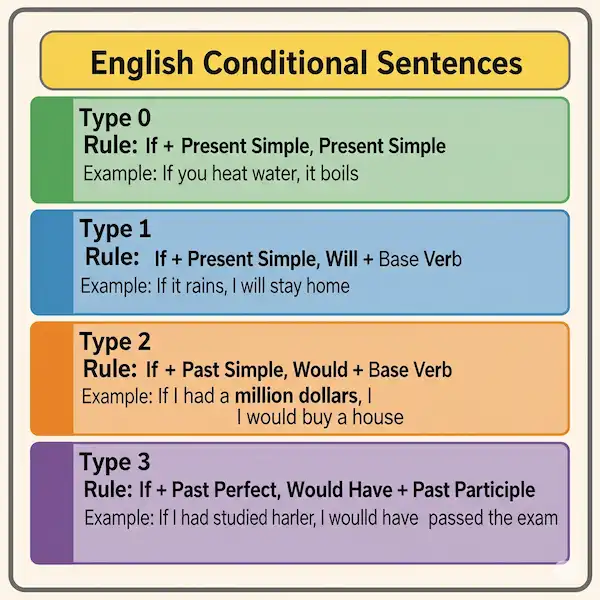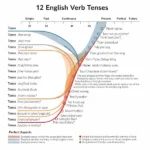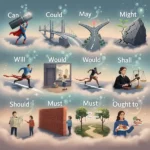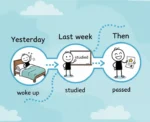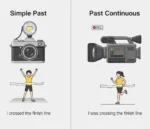Conditionals Made Easy: Understanding Types 0, 1, 2, and 3 Correctly
Hello, language learners! 🌐 Are you ready to talk about things that might happen, things that are impossible, or things that are always true? English Conditionals are a key part of English grammar that help us do just that. This article will break down the four main types of conditionals (0, 1, 2, and 3) with simple explanations, clear examples, and helpful charts.
What is a Conditional Sentence?
An English conditional sentence has two parts:
- The ‘if’ clause (the condition): This part describes a possible situation.
- The main clause (the result): This part describes what happens as a result of the condition.
The order doesn’t matter, but if the ‘if’ clause comes first, you need a comma to separate the two parts.
- If it rains, we will stay inside.
- We will stay inside if it rains.
Type 0 English Conditional: The Truth Teller
This conditional is for things that are always true, scientific facts, or general habits. It’s about cause and effect.
- When to use it: To state a fact or a general truth.
- Structure: If + present simple, present simple.
| ‘if’ Clause (Condition) | Main Clause (Result) | Explanation |
| If you heat water, | it boils. | This is a scientific fact. It’s always true. |
| If I eat too much, | I get a stomachache. | This is a general truth for the speaker. |
Example: If you press that button, the machine turns on.
Type 1 English Conditional: The Real Possibility
This conditional is for a real or very likely situation in the future. The condition is possible, and the result is probable.
- When to use it: To talk about a future plan or a likely outcome.
- Structure: If + present simple, will + base verb.
| ‘if’ Clause (Condition) | Main Clause (Result) | Explanation |
| If it rains tomorrow, | we will cancel the picnic. | It’s a possible situation in the future. |
| If she studies hard, | she will pass the exam. | The condition (studying) is likely to lead to the result (passing). |
Example: If you call me later, I’ll tell you the news.
Type 2 English Conditional: The Unreal Fantasy
This conditional is for an unreal or unlikely situation in the present or future. It’s about imagination and hypothetical ideas.
- When to use it: To talk about a dream, a wish, or something that is not likely to happen.
- Structure: If + past simple, would + base verb.
| ‘if’ Clause (Condition) | Main Clause (Result) | Explanation |
| If I won the lottery, | I would buy a new house. | This is an imaginary situation. I probably won’t win the lottery. |
| If I had a million dollars, | I would travel the world. | This is a wish. I don’t have a million dollars. |
Note: For the verb “be,” we usually use were for all subjects in the ‘if’ clause. For example: “If I were you…”
Type 3 English Conditional: The Past Regret
This conditional is for talking about an unreal situation in the past. It’s used for regrets or things that can no longer be changed.
- When to use it: To imagine a different past.
- Structure: If + past perfect, would have + past participle.
| ‘if’ Clause (Condition) | Main Clause (Result) | Explanation |
| If you had studied harder, | you would have passed the exam. | You didn’t study, and you didn’t pass. The past cannot be changed. |
| If I had known you were in town, | I would have called you. | I didn’t know, so I didn’t call. It’s a regret. |
Common Mistakes to Avoid
- Mixing up the tenses: This is the most common mistake. Remember the structure for each type!
- Using “would” in the ‘if’ clause: You should never use “would” directly after “if.”
- Incorrect: If I would have gone, I would have seen him.
- Correct: If I had gone, I would have seen him.
EAAT Helpful Content
For English learners, practicing English conditionals is essential. Here are some tips to help you master them:
- Create your own sentences: Use the structures above to write your own sentences for each type. Start with simple ideas.
- Find examples in real life: Listen to songs, watch movies, or read articles. You will hear and see conditionals everywhere!
- Use them in conversation: Try to use one or two conditional sentences in your daily conversations. This will help you remember the structures.
- Review the charts: Come back to the charts in this article often to review the structures until they become natural to you.
Additional Helpful Content
- Think about the “reality”: A simple way to remember the types is to think about how real or possible the situation is.
- Type 0: 100% Real (Fact)
- Type 1: Very Possible (Likely)
- Type 2: Not Real (Imaginary)
- Type 3: Not Real in the Past (Regret)
- Practice with a partner: Play a game where one person says an ‘if’ clause and the other person completes the sentence with the correct result.
Practice Makes Perfect
Here is a PDF worksheet you can download with 25 sentences using English conditionals. The answers are on a separate page.
Conclusion
Mastering conditionals is a big step in becoming a more confident English speaker and writer. By understanding the four main types and their specific uses, you can express complex ideas about possibilities, facts, and regrets. Keep practicing, and soon you’ll be using conditionals correctly without even thinking about it!
Additional Helpful Content
- Study about English Modal Verbs – English Modal Verbs: ‘May,’ ‘Might,’ ‘Could’: English Possibility
External Links for Further Learning
- British Council – Conditionals: https://learnenglish.britishcouncil.org/english-grammar/conditionals
- Purdue OWL (Online Writing Lab): https://owl.purdue.edu/owl/general_writing/grammar/conditional_sentences.html
- Grammarly Blog – Conditionals: https://www.grammarly.com/blog/conditional-sentences/
